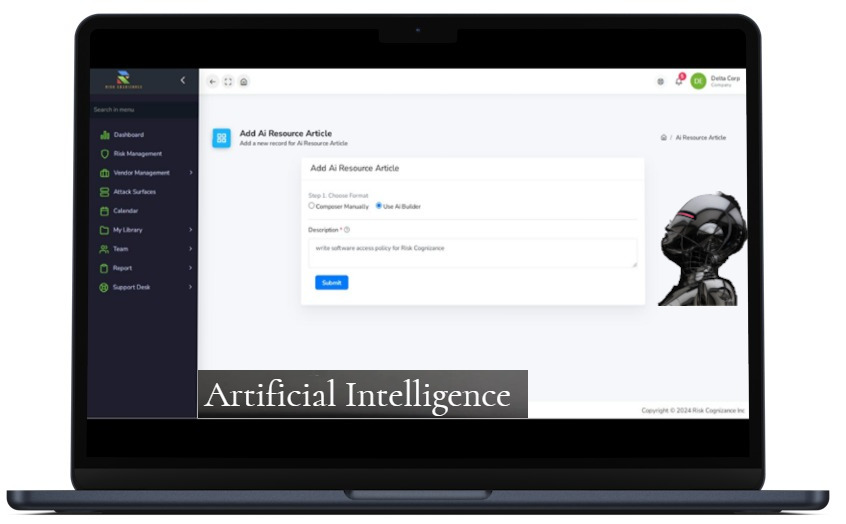Overview
Risk Cognizance GRC: Your Comprehensive Solution for Enhanced Security and Compliance
Risk Cognizance is a powerful GRC platform designed to help organizations of all sizes improve their security posture, ensure regulatory compliance, and optimize operations. With our comprehensive suite of tools, you can:
Identify and mitigate risks: Assess vulnerabilities and implement effective mitigation strategies.
Ensure regulatory compliance: Adhere to industry standards like GDPR, HIPAA, and NIST.
Streamline operations: Optimize processes and reduce manual effort.
Gain valuable insights: Make data-driven decisions to improve your security posture.
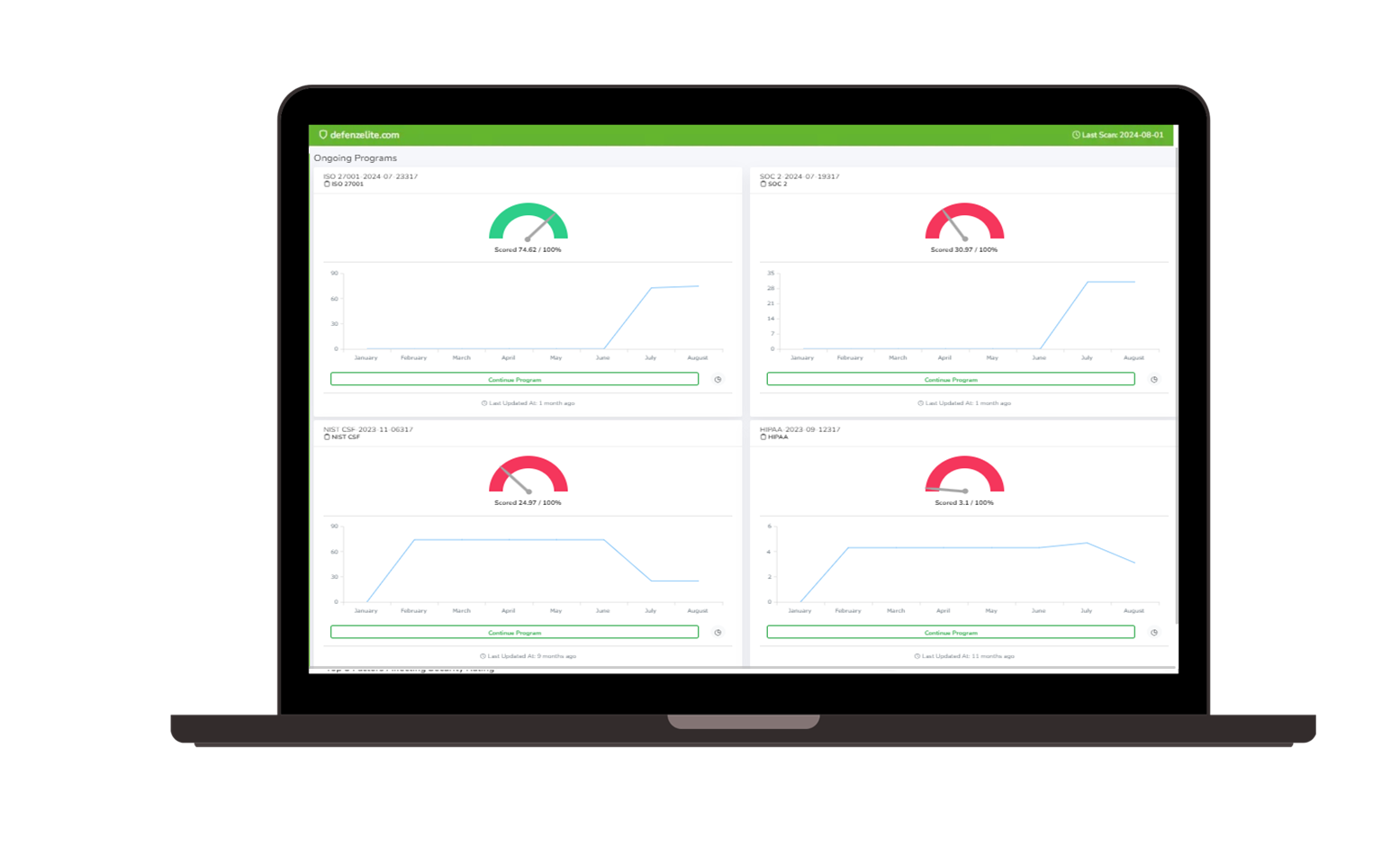 Governance, Risk, and Compliance (GRC) | 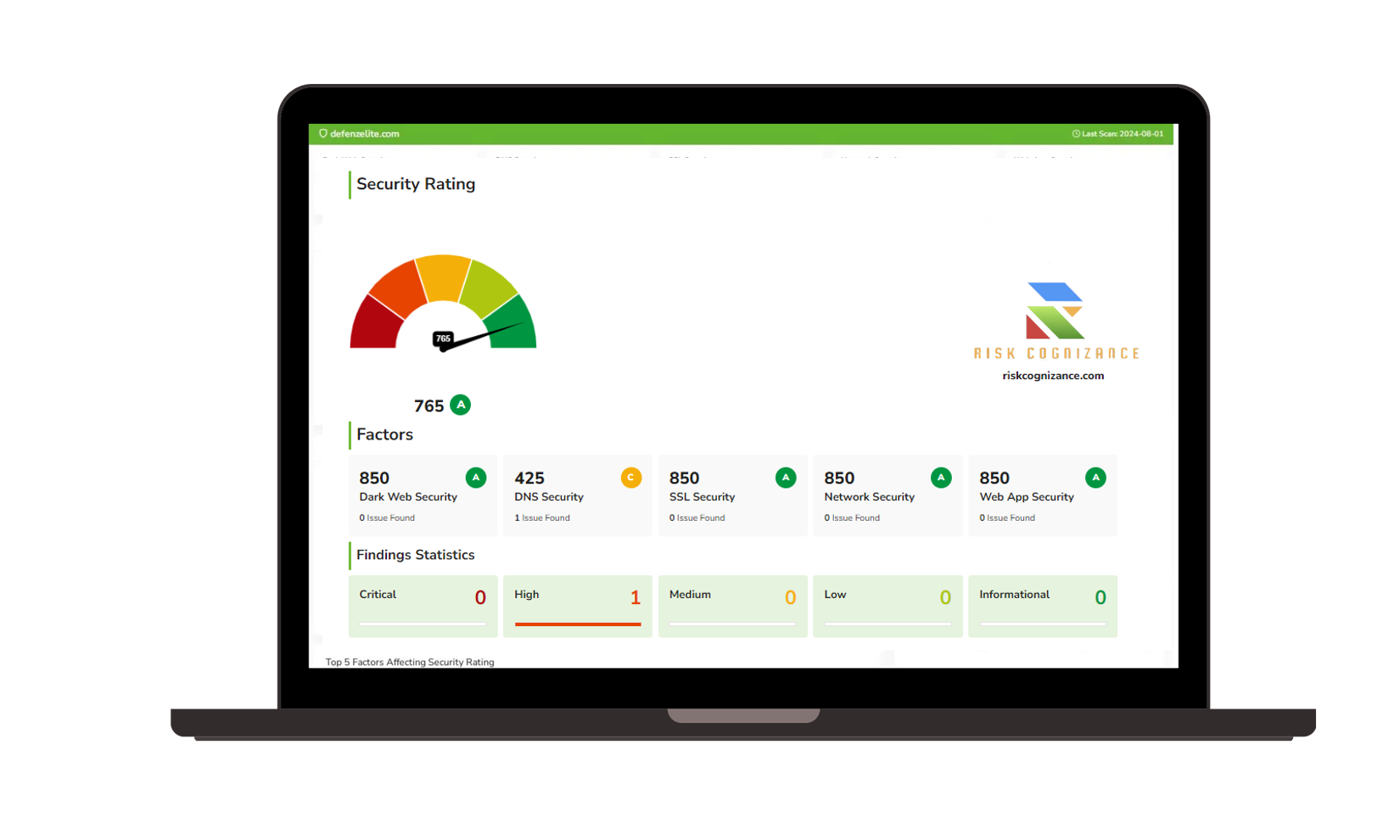 Third-party Risk Management |
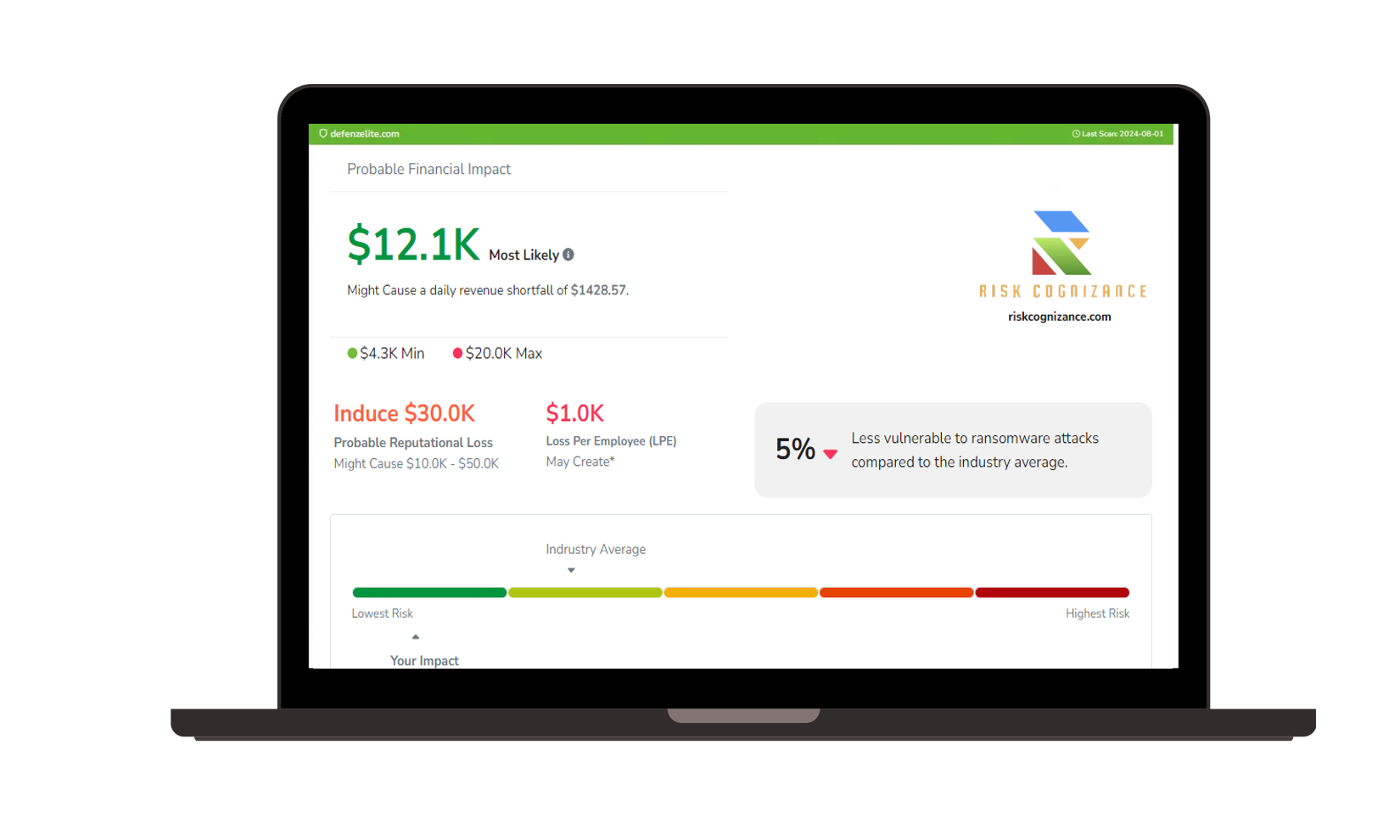 Ransomware Susceptibility | 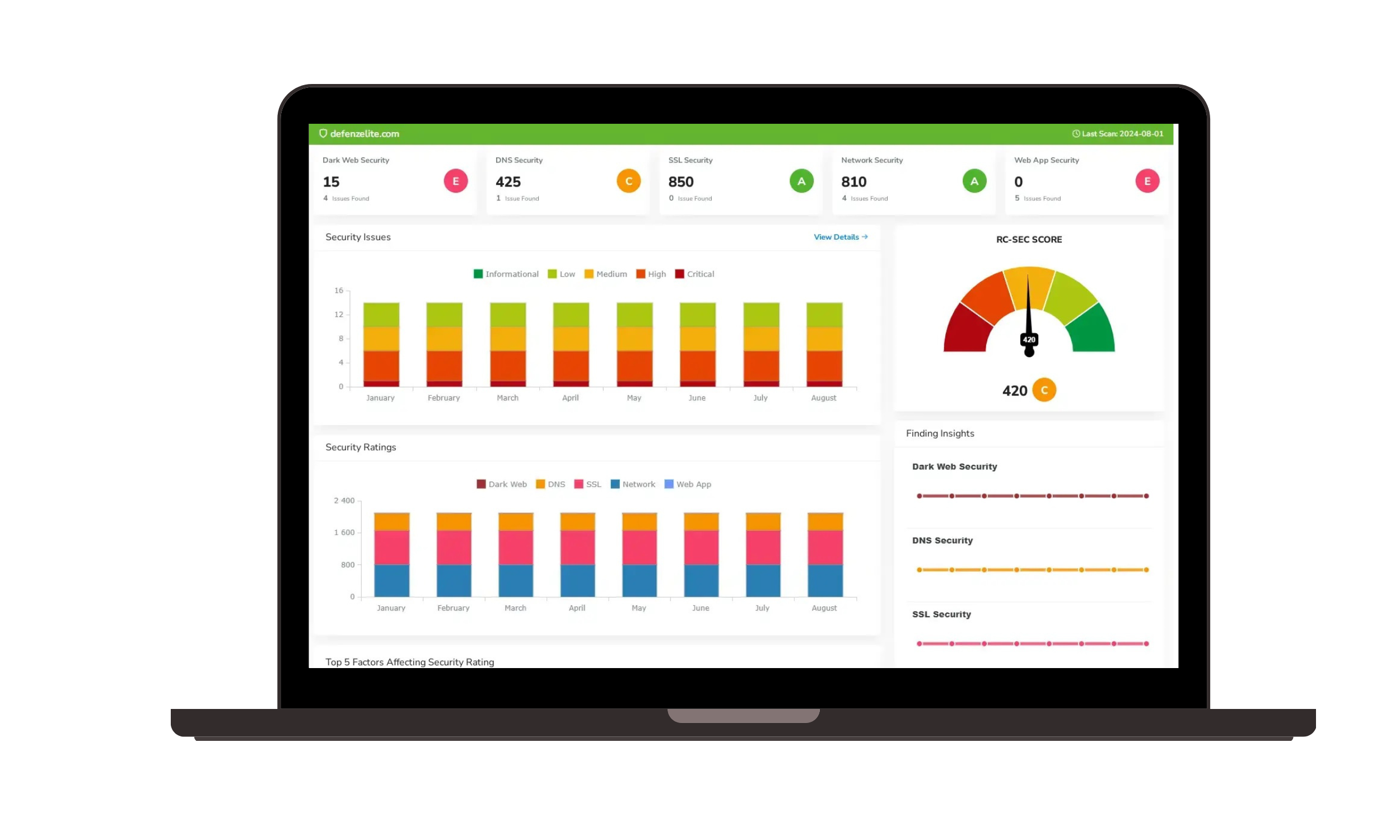 GRC and Attack Surface |
Artificial Intelligence | |
What is GRC?
Governance, Risk, and Compliance (GRC) is a strategic approach that enables businesses to manage their operations while adhering to compliance requirements and minimizing risk. This approach is particularly important for Managed Service Providers (MSPs) and Managed Security Service Providers (MSSPs), who handle sensitive data and complex systems on behalf of their clients. GRC frameworks help these providers establish clear policies, streamline processes, and maintain compliance in a complex regulatory landscape.
Why is GRC Important for MSPs & MSSPs?
The importance of GRC for MSPs and MSSPs cannot be overstated. Here’s why it’s essential:
- Data Sensitivity: MSPs and MSSPs manage sensitive client data, making strong governance, risk management, and compliance measures critical for preventing breaches and data loss.
- Regulatory Pressures: These service providers face various compliance requirements, such as GDPR, HIPAA, and PCI DSS, which necessitate a robust GRC strategy.
- Client Trust: Clients must be confident that their data is handled securely and in compliance with regulations. A strong GRC strategy builds trust and ensures long-lasting client relationships.
What Makes Up a GRC Framework?
GRC is comprised of three interrelated components:
Governance:
The practices and processes that ensure an organization is effectively managed, aligning operations with strategic objectives and regulatory requirements.
Risk Management:
Identifying, assessing, and prioritizing risks, followed by actions to mitigate or control them. This proactive approach safeguards MSPs, MSSPs, and their clients.
Compliance:
Ensuring that the organization and its practices adhere to applicable laws, regulations, and internal policies, which is vital for maintaining integrity and avoiding penalties.
Types of Businesses That Benefit from GRC Solutions
While GRC is beneficial for all businesses, the following types particularly benefit:
- MSSPs and MSPs: Need robust GRC frameworks to manage security risks, ensure compliance for clients, and streamline processes.
- Healthcare Organizations: Must comply with stringent regulations like HIPAA while managing sensitive patient data.
- Financial Services: Require rigorous compliance measures to protect customer data and adhere to financial regulations.
- Technology Firms: Must manage vulnerabilities in software and infrastructure while complying with data protection laws.
Internal vs. External GRC Approaches
When building a GRC strategy, organizations need to choose between internal and external approaches:
Internal GRC:
- Description: The organization builds its GRC capabilities internally, using in-house teams to manage governance, risk, and compliance efforts.
- Benefits:
- Tailored Solutions: Solutions can be customized to meet specific organizational needs.
- Direct Control: Direct oversight of processes and policies, ensuring alignment with business goals.
- Immediate Response: Faster reaction to emerging risks and compliance issues.
- Challenges:
- Resource Intensive: Requires a significant investment in training, personnel, and technology.
- Scalability: May struggle to scale as the organization grows or faces new regulatory demands.
External GRC:
- Description: The organization outsources GRC functions to third-party providers (e.g., MSSPs) with expertise in governance, risk management, and compliance.
- Benefits:
- Access to Expertise: Leverages specialized knowledge and resources not readily available internally.
- Cost-Effective: Reduces the costs associated with hiring and maintaining a full-time internal GRC team.
- Scalable: Quickly scales to meet changing business and regulatory needs.
- Challenges:
- Less Control: Potential for misalignment with organizational culture or goals.
- Dependency Risks: Reliance on external partners for critical GRC functions.
Key Benefits of GRC for MSPs and MSSPs
Implementing a robust GRC platform provides numerous advantages:
Enhanced Data Protection:
GRC helps safeguard sensitive data through strong security policies and practices.
Reduced Downtime:
A well-defined GRC strategy minimizes downtime during disruptions and ensures business continuity.
Reduced Legal and Financial Risks:
Maintaining compliance mitigates legal and financial risks, protecting the business from fines and reputational damage.
Streamlined Processes:
GRC software automates compliance processes and provides a centralized view of compliance and cybersecurity data.
Clear Reporting Timelines:
GRC tools establish clear timelines for reporting compliance and risk status to stakeholders.
Compliance Management in GRC
Effective compliance management is crucial for maintaining a successful GRC framework:
- Policy Development: Establish clear policies and procedures that govern compliance efforts.
- Monitoring and Auditing: Regularly assess compliance status through audits and continuous monitoring to ensure adherence to regulations.
- Training and Awareness: Provide training for employees to foster a culture of compliance and awareness throughout the organization.
Attack Surface Management
Attack surface management is crucial for MSPs and MSSPs to protect their systems:
- Identifying Assets: Catalog all digital assets and entry points that could be exploited by attackers.
- Continuous Monitoring: Regularly assess the attack surface to identify vulnerabilities and potential threats.
- Mitigation Strategies: Implement controls and measures to reduce the potential attack surface and protect client data.
Vulnerability Management and Testing
Vulnerability management and testing are key components of a GRC framework:
- Regular Assessments: Conduct vulnerability assessments and penetration tests to identify weaknesses.
- Prioritization and Remediation: Evaluate identified vulnerabilities and implement remediation plans based on risk severity.
- Continuous Improvement: Establish a feedback loop to enhance security measures and improve resilience against future threats.
Testimonials
"Implementing Risk Cognizance’s GRC platform has revolutionized how we manage compliance and risk for our clients. The platform’s robust tools streamline processes, reduce downtime, and enhance data security across the board. As an MSSP, it’s a game-changer!"
— Bancroft Wilson, CEO of Advanced Techco
"Risk Cognizance’s platform has simplified our compliance management and significantly enhanced our ability to protect sensitive data. It’s become a core part of our strategy for safeguarding both our assets and our clients'."
— Liza Davis, Compliance Officer at Mega Mart

